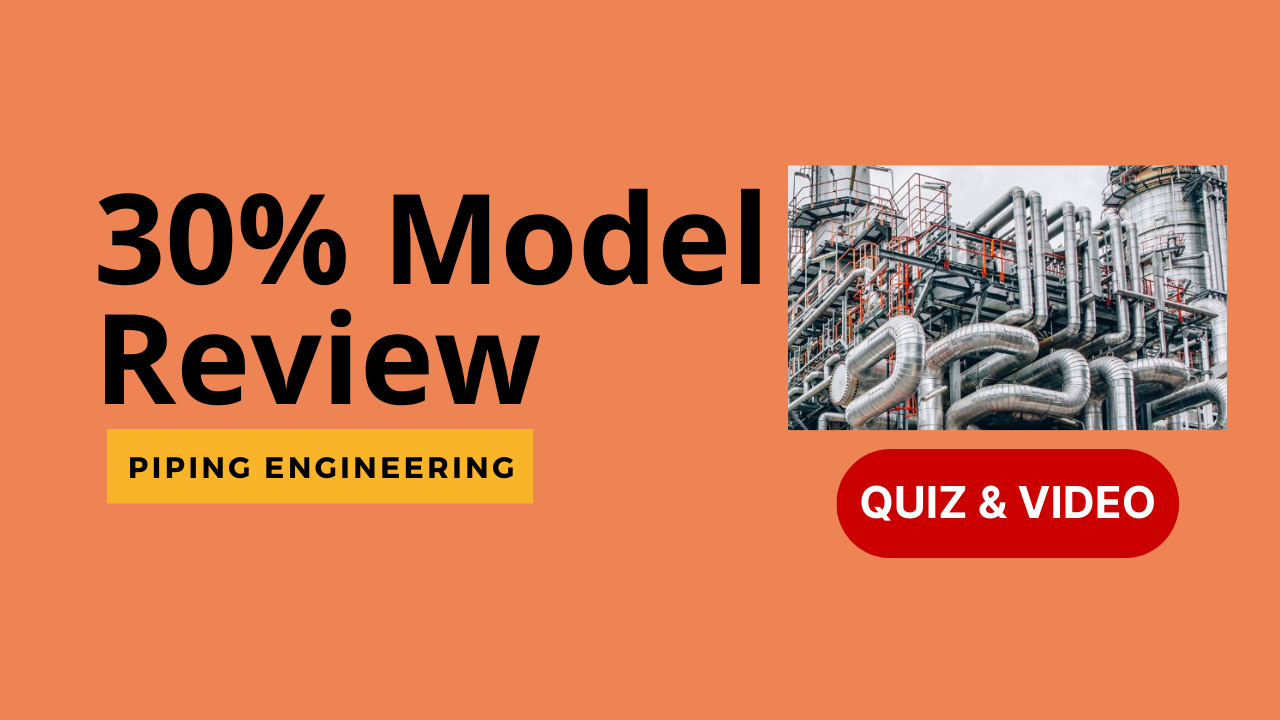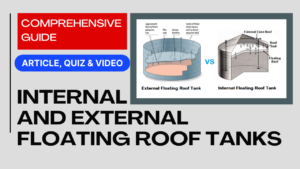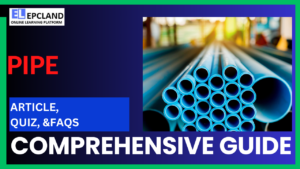In the world of design and engineering, 3D modeling has revolutionized the way projects are conceptualized, planned, and executed. 3D modeling involves the creation of three-dimensional digital representations of objects, structures, or systems using specialized software. This technology brings designs to life by providing a visual and interactive representation that goes beyond traditional 2D drawings. The purpose of 3D modeling extends far beyond mere aesthetics; it plays a pivotal role in various industries, including architecture, engineering, manufacturing, and entertainment.
Don’t miss the Complete Course on Piping Engineering: Check Now
By EPCLand.com
Table of Contents
Advantages of 3D Modeling
- Visual Clarity: 3D models offer a clear and realistic representation of complex designs, making it easier to understand intricate details.
- Error Detection: Design flaws and clashes can be identified in the modeling stage, minimizing costly errors during construction or manufacturing.
- Collaboration: 3D models serve as a collaborative platform, enabling multidisciplinary teams to work together effectively.
- Cost and Time Savings: By addressing issues early in the design phase, 3D modeling reduces the need for costly revisions and rework later on.
What is 3D Model Review and Its Stages
3D model reviews are a crucial part of the design and development process. These reviews involve a systematic evaluation of the 3D model to ensure its accuracy, functionality, and compliance with project requirements. The review process typically involves several stages, each focusing on different aspects of the design.
Stages of 3D Model Review
- Conceptual Review: In the early stages, the focus is on the overall concept and design intent. Feedback is gathered to ensure alignment with project goals.
- Design Review: This stage involves a comprehensive examination of the model’s technical aspects, such as dimensions, tolerances, and material specifications.
- Functional Review: The functional aspects of the model are evaluated, ensuring that all components interact as intended and perform their designated functions.
What is the Purpose of 30% Model Review
The 30% model review is a critical milestone in the project timeline. It takes place when the design is approximately 30% complete. This review offers several significant benefits:
- Early Issue Identification: By catching design issues and discrepancies early on, the 30% review prevents potential bottlenecks and costly revisions during later stages.
- Alignment with Requirements: The review ensures that the project is on track and aligned with the client’s requirements and expectations.
- Informed Decision-Making: The feedback gathered during the 30% review empowers project stakeholders to make informed decisions and adjustments.
Interesting Facts About 30% Model Review
- The 30% model review is a standard practice in industries such as architecture, engineering, and construction.
- It contributes to improved project communication, allowing stakeholders to visualize the evolving design.
- The 30% review acts as a quality control checkpoint, enhancing the overall project outcome.
30% Review Check Points
During the 30% model review, specific checkpoints are assessed to ensure the design’s quality and accuracy. These checkpoints encompass various disciplines:
Safety
- Identification of potential safety hazards and risks within the design.
- Assessment of safety measures implemented in the model.
Civil
- Evaluation of the site layout, grading, and drainage design.
- Verification of compliance with local regulations and zoning requirements.
Structural
- Examination of the structural integrity and stability of the design.
- Analysis of load-bearing elements and foundation systems.
Mechanical
- Review of mechanical systems, including HVAC, plumbing, and fire protection.
- Assessment of equipment layout and functionality.
Piping, Electrical, Instrumentation
- Verification of the layout and connectivity of piping systems.
- Assessment of electrical systems and instrumentation integration.
FAQs
Q1: What is the purpose of 3D modeling? A1: 3D modeling serves to create accurate, visual representations of designs for improved communication, error detection, and collaboration.
Q2: Why are 3D model reviews important? A2: 3D model reviews ensure design accuracy, functionality, and alignment with project requirements, preventing issues during later stages.
Q3: What is the significance of the 30% model review? A3: The 30% review identifies issues early, aligns the design with requirements, and supports informed decision-making in projects.
Q4: What disciplines are assessed during the 30% model review? A4: The 30% review checks safety, civil design, structural integrity, mechanical systems, and piping, electrical, and instrumentation layouts.
Q5: How does 3D modeling contribute to cost savings? A5: 3D modeling detects errors early, reducing the need for costly revisions, enhancing project efficiency, and minimizing rework expenses.
In conclusion, 3D modeling is a transformative technology that enhances design accuracy, communication, and collaboration across various industries. The stages of 3D model review, especially the 30% review, play a pivotal role in ensuring project success by identifying issues, aligning designs with requirements, and supporting well-informed decision-making. By leveraging the power of 3D modeling and comprehensive reviews, industries can achieve efficiency, accuracy, and cost savings throughout the project lifecycle.
Recommended courses (Published on EPCLand)
- Basics of Piping Engineering
- Piping Layout Engineering
- Piping Material Engineering
- Piping Stress Analysis
- Complete Course on Piping Engineering
- Material Requisitions
- Piping Material Specifications
- Valve Material Specifications
Don’t miss the published articles on following:
Related Video
Attempt Quiz
Question 1:
What is 3D modeling?
Explanation: 3D modeling is the process of representing objects or scenes in a three-dimensional space using computer software to create virtual models.
Question 2:
What is 3D model review?
Explanation: 3D model review involves the evaluation and assessment of virtual 3D models to ensure accuracy, functionality, and compliance with design requirements.
Question 3:
What is the purpose of a 30% model review?
Explanation: The purpose of a 30% model review is to perform a preliminary assessment of the design to identify any major issues, errors, or inconsistencies before advancing further in the project.
Question 4:
What are some interesting facts about 30% model review?
Explanation: 30% model review helps in identifying design flaws, errors, and optimization opportunities early in the project, enabling corrective actions before moving forward.
Question 5:
What are some check points in a 30% model review?
Explanation: Check points in a 30% model review typically include safety aspects, civil engineering considerations, structural integrity, mechanical functionality, and assessments of piping, electrical, and instrumentation systems.



